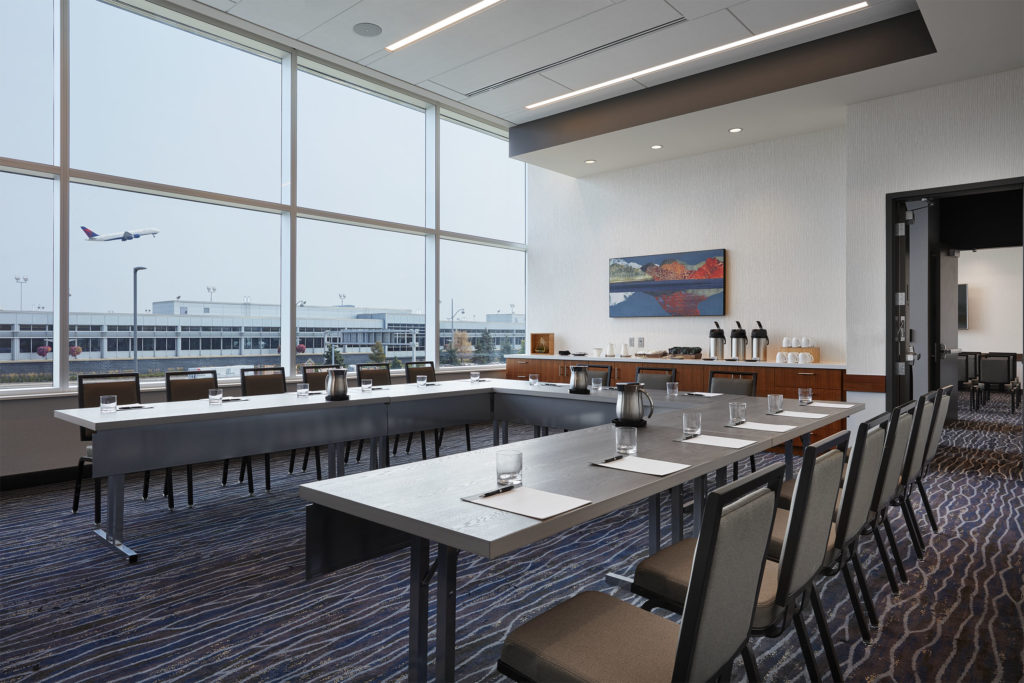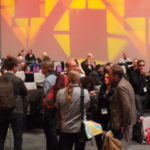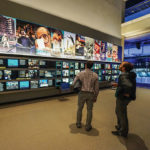 While many attendees tack on vacation time to business events, that’s a luxury others don’t have time for. Not all prospective attendees are looking to immerse themselves in all a destination has to offer — especially health-care professionals.
While many attendees tack on vacation time to business events, that’s a luxury others don’t have time for. Not all prospective attendees are looking to immerse themselves in all a destination has to offer — especially health-care professionals.
As physicians deal with new regulations and overwhelming patient loads, they are paying particular attention to the time required to get from point A to B in order to earn CMEs. According to research conducted by global health-care firm Ashfield, physicians are only willing to spend 4.7 hours traveling to a meeting — a decrease of more than two hours compared with the same study in 2016. That heightened demand for a more efficient travel experience is leading some event organizers to reconsider downtown locations in favor of venues that lie just beyond the runway.
“More medical meetings are looking at airport properties,” Pat Schaumann, senior director of health-care compliance at Maritz, told Convene. “It’s easy to get in and out, which is a big selling point for physicians who don’t want to be away from their practices for a long time.”
Schaumann added that regulatory requirements typically limit medical professionals to no higher than four-star properties. Since airport hotels skew away from the five-star, luxury accommodations category, organizers can easily check that box. From May 17–18, non-profit addiction-recovery organization Aliviane welcomed more than 200 participants to the Radisson Hotel at the El Paso, Texas Airport. While a large portion of the audience was within driving distance of the property, Susie Villalobos, regional evaluator at Aliviane, told Convene that the location made a difference for some of the health-care professionals.
“We had a handful of guests who needed to travel [via air] to the conference,” Villalobos said. “Those who did appreciated the closeness of the airport location, which was less than five minutes away.”
Villalobos said that Aliviane will be looking to host events at airport properties in the future. She’s not alone. Here is a sampling of health-care events held at airport hotels within the last month:
- From Sept. 14–15, attendees earned up to 11 CME credits at the American Association for the Study of Liver Diseases’ Hepatic Fibrosis Single Topic Conference at the Hyatt Regency DFW International Airport.
- The World Congress on General Pediatrics & Adolescent Medicine welcomed medical professionals to the Doubletree by Hilton Hotel at the Philadelphia Airport From Sept. 17–18.
- The increase in airport-venue popularity is not confined to the U.S. From Oct. 2–3, participants at the MENA Health Insurance Congress are scheduled to meet at the Millennium Airport Hotel in Dubai for the MENA Health Insurance Congress.
Benefits and Considerations
Skipping the second leg of the journey once they land in a destination certainly has its advantages for attendees, but organizers also see the perks of holding events at airport venues. Sally Ableitner, director of sales and marketing at the InterContinental Minneapolis – St. Paul Airport, said that the property’s largest clients are companies in the medical-device industry. Since the hotel opened this past July, Ableitner estimates that it has hosted at least 50 events each month for pharmaceutical and medical-device companies. Those events range from intimate five-person gatherings to bigger, 200-person meetings. While the size varies, the questions that all organizers ask before booking are typically similar.
“When prospective clients call, they’re most interested in understanding how we are connected to the airport,” Ableitner said. “They’re focused on the transfer time. The smaller amount of transfer from the gate, the more time they can have one-on-one with their team members. They want to maximize opportunities to collaborate.”
There’s another key benefit: cost. “Organizers are happy to avoid paying for transportation,” Ableitner said. “Instead of paying for 10 individuals to take car services to a corporate office, one representative from that office hosts the meeting at the hotel. Compared with one person per vehicle [transit to other venues], the savings can be astronomical.”
Organizers will soon be able to add up those savings in more destinations. Hotels with direct airport access are slated to open in Atlanta, San Francisco, New York (JFK), and Dublin within the next two years. Those properties will stand out on the map for some medical event organizers, but Schaumann pointed out that it’s unlikely any of these hotels will welcome large annual gatherings. “You won’t see many large-scale medical meetings at airport hotels,” Schaumann said. “They tend to be sites for smaller events like advisory board gatherings.”
And while the Ashfield study spotlighted health-care practitioners’ desire to spend less time traveling to a conference compared to the 2016 survey, the opportunity to visit a new city or location was a slightly more important contributing factor in their decision-making criteria than two years ago. “Destinations are clearly still a consideration as to whether or not a health-care professional is compelled to attend,” the report concluded. “The decision and appropriate venue selection remains important, despite the increasingly vigorous regulatory environment.”
When the appropriate venue is an airport hotel, they can make the transition from airline passenger to session attendee in less time. But that doesn’t mean they want to passively collect their CME hours and be on their way home. Eight out of 10 respondents to the Ashfield study said meetings should have more interactive activities like workshops, and 82 percent are looking for active panel discussion between speakers and participants.
Survey Says
Ashfield’s Science of Healthcare Professional Meetings 2018 is a study of 237 respondents in the U.S., U.K., France, and Germany, practicing in four medical specialties: oncology, neurology, diabetes/endocrinology, and cardiology. Their responses indicate that meeting attendance remains a key component of health-care professionals’ education and development: Two-thirds of respondents said that access to networking opportunities with global experts and key opinion leaders is their primary motivator for attendance.
Yet more than half said that increasing regulatory barriers continue to restrict their ability to attend face-to-face conferences. And time is also a concern. U.S. respondents said the ideal number of days spent away from their practice is 2.5 per meeting, while the French respondents prefer 1.9 days and Germans 1.7 days. Additionally, 57 percent of healthcare respondents said meetings should allocate less time for non-educational activities.
Download Ashfield’s white paper on health-care professional events at convn.org/ashfield.



